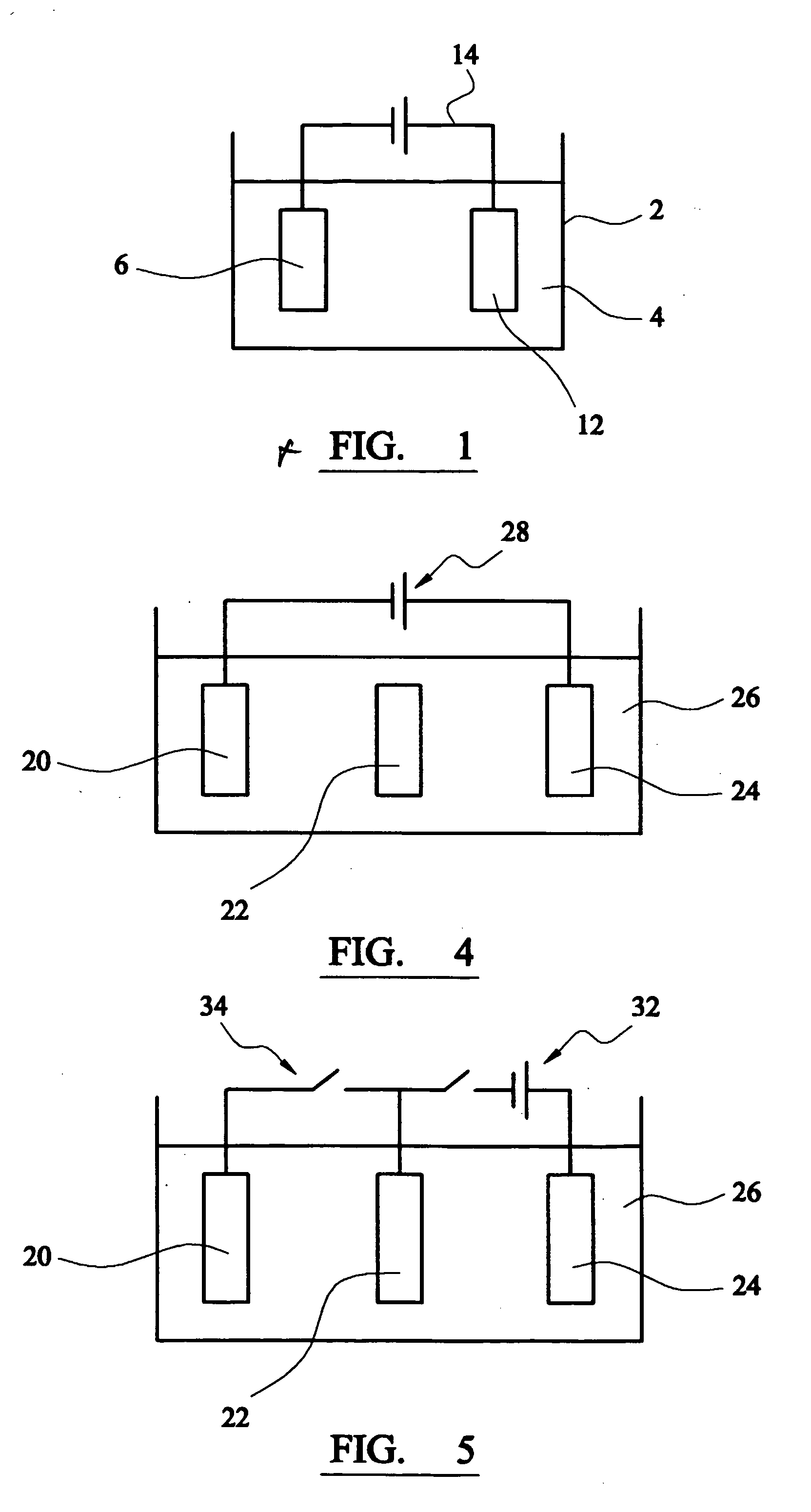Electrochemical processing of solid materials in fused salt
a technology of solid materials and fused salt, which is applied in the direction of electrolysis components, electrolysis processes, etc., can solve the problems of low current, ineffective use of current by non-effective electro-deoxidation, and low cost of supplying current, so as to achieve direct and cheaper
- Summary
- Abstract
- Description
- Claims
- Application Information
AI Technical Summary
Benefits of technology
Problems solved by technology
Method used
Image
Examples
first embodiment
[0058]FIG. 1 illustrates an apparatus according to the invention during electro-deoxidation;
[0059]FIG. 2 illustrates the apparatus of FIG. 1 during reactive metal processing;
second embodiment
[0060]FIG. 3 illustrates an apparatus according to the invention during reactive metal processing;
third embodiment
[0061]FIG. 4 illustrates an apparatus according to the invention during electro-deoxidation; and
[0062]FIG. 5 illustrates the apparatus of FIG. 4 during reactive metal processing.
[0063]FIG. 1 shows a cell 2 containing a calcium chloride melt 4. In the melt are immersed a sample 6 of titanium dioxide and an inert anode 12. A voltage of about 2.5 to 3.3V is applied through an external circuit 14 between the sample 6, which forms a cathode, and the anode. The titanium dioxide is an electrical insulator and is contacted with an inert conductor to enable the electro-deoxidation. This can be achieved in a variety of ways, such as slip-casting, and optionally sintering, titanium dioxide powder to form a solid, but porous, sample around a conductor core, or by placing titanium dioxide pellets in an inert, conducting basket. These techniques are known from the prior art, including PCT / GB99 / 01781.
[0064] When electro-deoxidation slows, as the oxygen content drops as described above, it is thou...
PUM
| Property | Measurement | Unit |
|---|---|---|
| temperature | aaaaa | aaaaa |
| voltage | aaaaa | aaaaa |
| distance | aaaaa | aaaaa |
Abstract
Description
Claims
Application Information
 Login to View More
Login to View More - R&D
- Intellectual Property
- Life Sciences
- Materials
- Tech Scout
- Unparalleled Data Quality
- Higher Quality Content
- 60% Fewer Hallucinations
Browse by: Latest US Patents, China's latest patents, Technical Efficacy Thesaurus, Application Domain, Technology Topic, Popular Technical Reports.
© 2025 PatSnap. All rights reserved.Legal|Privacy policy|Modern Slavery Act Transparency Statement|Sitemap|About US| Contact US: help@patsnap.com



